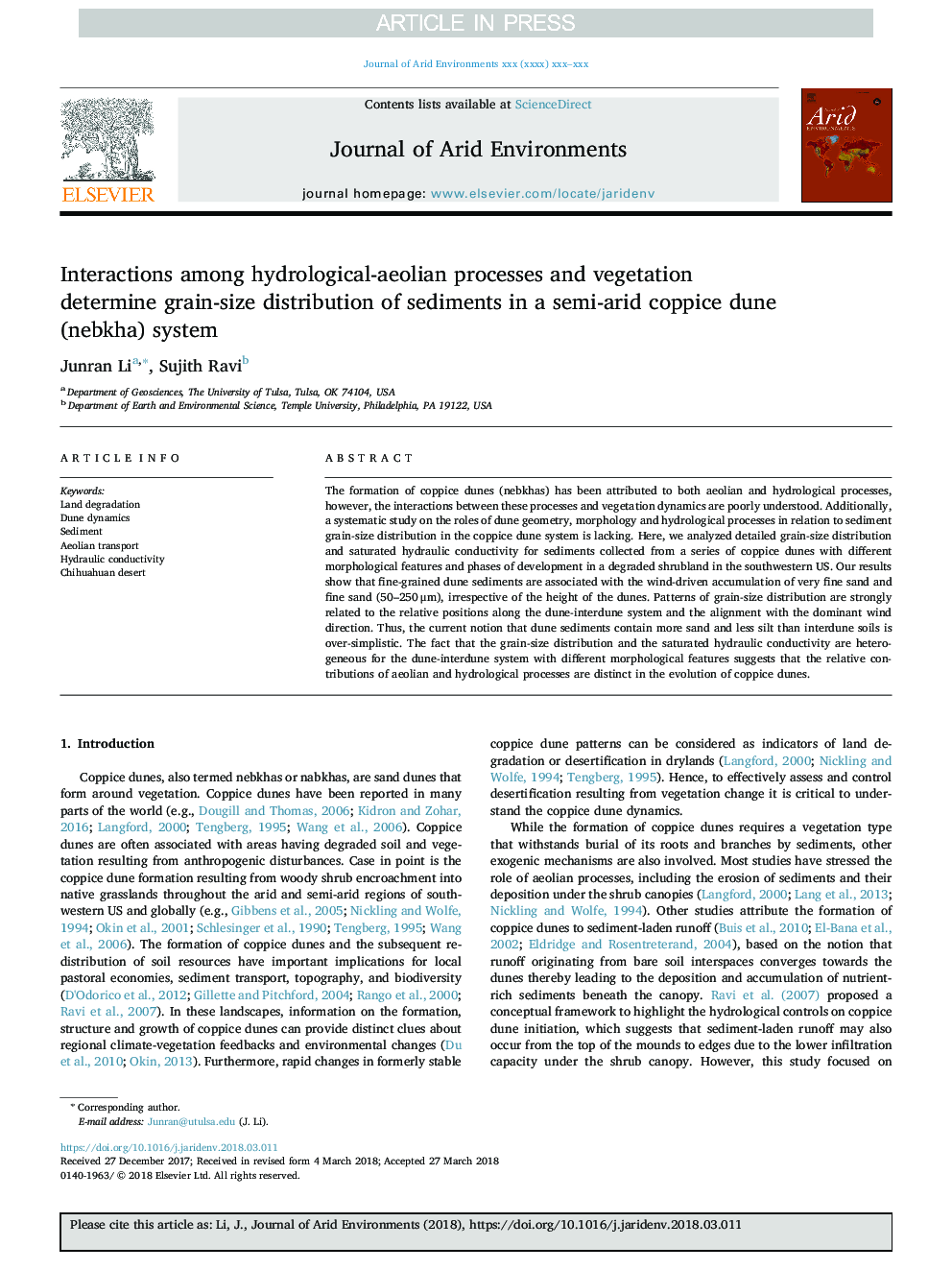| Article ID | Journal | Published Year | Pages | File Type |
|---|---|---|---|---|
| 8848484 | Journal of Arid Environments | 2018 | 10 Pages |
Abstract
The formation of coppice dunes (nebkhas) has been attributed to both aeolian and hydrological processes, however, the interactions between these processes and vegetation dynamics are poorly understood. Additionally, a systematic study on the roles of dune geometry, morphology and hydrological processes in relation to sediment grain-size distribution in the coppice dune system is lacking. Here, we analyzed detailed grain-size distribution and saturated hydraulic conductivity for sediments collected from a series of coppice dunes with different morphological features and phases of development in a degraded shrubland in the southwestern US. Our results show that fine-grained dune sediments are associated with the wind-driven accumulation of very fine sand and fine sand (50-250â¯Î¼m), irrespective of the height of the dunes. Patterns of grain-size distribution are strongly related to the relative positions along the dune-interdune system and the alignment with the dominant wind direction. Thus, the current notion that dune sediments contain more sand and less silt than interdune soils is over-simplistic. The fact that the grain-size distribution and the saturated hydraulic conductivity are heterogeneous for the dune-interdune system with different morphological features suggests that the relative contributions of aeolian and hydrological processes are distinct in the evolution of coppice dunes.
Keywords
Related Topics
Physical Sciences and Engineering
Earth and Planetary Sciences
Earth-Surface Processes
Authors
Junran Li, Sujith Ravi,
